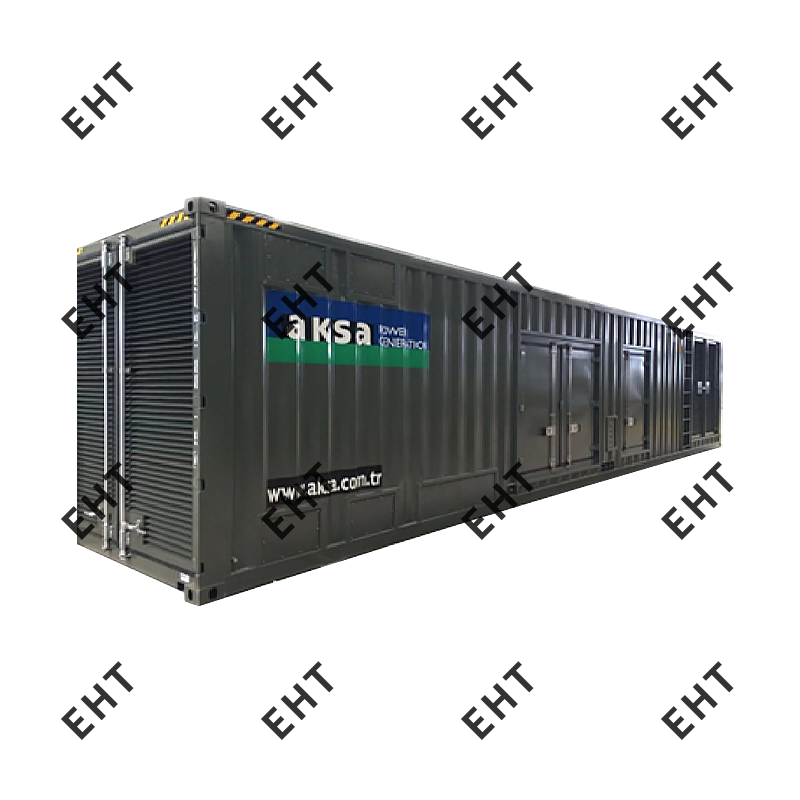Containerized acoustic insulation design plays a critical role in determining the noise attenuation levels of diesel generator containers. A well-engineered acoustic system significantly reduces the sound emissions produced during generator operation, ensuring compliance with environmental regulations and improving conditions for personnel and nearby residents or equipment. Here's how the design directly influences performance:
1. Material Selection and Acoustic Performance
Sound-Absorbing Materials: High-density acoustic foam, mineral wool, or perforated metal-backed rock wool are commonly used for absorbing mid to high-frequency noise.
Mass-Loaded Barriers: Materials like lead-loaded vinyl or dense composite panels are included to block low-frequency engine and exhaust sounds.
Fire-Rated and Oil-Resistant Options: Acoustic materials must meet fire safety standards (e.g., UL 94 or BS 476) and resist degradation from oil mist and high temperatures.
Impact: Proper material selection can reduce internal noise levels by up to 25–40 dB(A), depending on the frequency range and application.
2. Multi-Layer Wall Construction
Layered Panels: Walls of the container typically consist of a metal outer shell, an insulation layer, and an inner acoustic lining. This mass-spring-mass configuration dampens both airborne and structure-borne noise.
Decoupling Layers: Prevent direct transmission of vibration and sound through rigid connections, improving overall attenuation.
Impact: Multi-layer construction helps address both sound reflection and transmission, critical for achieving target sound pressure levels such as 70 dB(A) at 1 meter.
3. Acoustic Louvers and Ventilation Silencers
Air Inlet/Outlet Baffles: Sound-attenuating louvers are installed in ventilation paths to suppress noise without restricting airflow.
Split Silencers: Located in intake and exhaust ducts, they minimize noise from engine breathing and exhaust operations.
Impact: Properly designed ventilation silencers can reduce noise escape through airflow systems by 15–30 dB(A).
4. Vibration Isolation
Anti-Vibration Mounts: Generators are typically installed on spring or rubber mounts to reduce structure-borne noise that transfers to container walls.
Floating Floors and Isolated Panels: Reduce vibration-induced resonance within the container’s structure.
Impact: Effective vibration isolation mitigates low-frequency rumble and structure-borne noise, contributing to a quieter external footprint.

5. Acoustic Door and Seal Design
Sealed Access Doors: Gasket-lined and internally insulated doors prevent noise leakage through access points.
Double or Overlapping Doors: Enhance soundproofing and ease of access for maintenance.
Impact: Proper sealing can reduce localized sound leakage by up to 10 dB(A) or more around door areas.
6. Exhaust Silencer Integration
Internal or Roof-Mounted Silencers: Absorb high-energy exhaust noise before it exits the container.
Critical or Hospital-Grade Silencers: Reduce exhaust noise by 30–50 dB(A) depending on the specification.
7. Acoustic Modeling and Certification
Computational Simulation: Finite Element Analysis (FEA) and acoustic simulation tools predict performance before construction.
Testing Compliance: Designs are validated according to standards like ISO 3744, ISO 8528-10, or local noise ordinances.
The acoustic insulation design of diesel generator containers directly affects their external noise profile, regulatory compliance, and site suitability. Optimized systems:
Balance airflow with noise control
Use layered insulation and dampening techniques
Apply precision in structural design and materials
Such configurations can bring generator noise well below 75 dB(A) at 1 meter, suitable for urban and sensitive environments. Let me know if you’d like a comparison of acoustic classes (standard vs. super silent) or an example layout of a containerized acoustic system.






